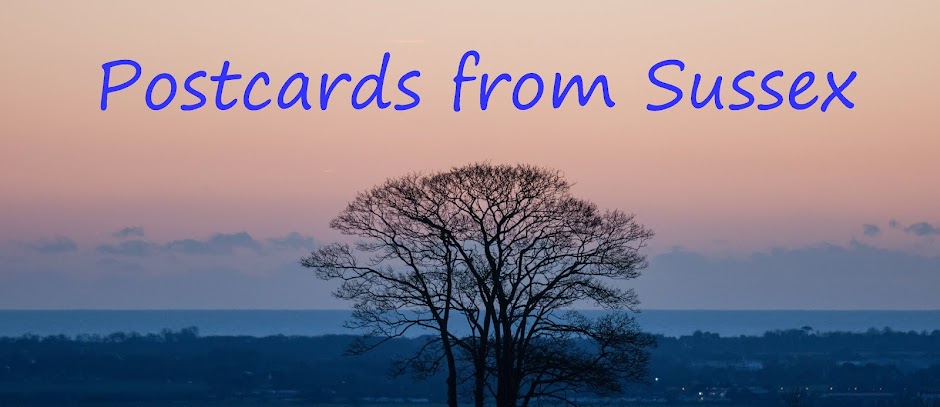Golf course developers are once again applying to develop
Weavers Down in West Sussex.
This site is the only place in West Sussex where the
Grayling butterfly exists and one of the few where the
Silver-studded Blue butterfly is found. These butterflies are Red List species,
meaning they are at greatest risk from extinction, see http://butterfly-conservation.org/files/red-list.pdf.
Weavers Downs is also one of the few unspoiled and comparatively wild areas of lowland heath in the area and is home to many rare heathland species.
Weavers Downs is also one of the few unspoiled and comparatively wild areas of lowland heath in the area and is home to many rare heathland species.
Please object on-line using this website, which
requires registration:
enter SDNP/13/02300/FU
into the search box, login or register and create your comment objecting to the
planning application. (note: I found the
website slow and clunky).
It seems the deadline for objections is March 6.
Weavers Down in NW Sussex has a special place in our
hearts. It is the ONLY place in West Sussex which is home to the rare Grayling
butterfly as well as 27 other butterfly species (including Silver-studded Blue)
as well as woodlarks, sand lizards, nightjars and loads of other nationally and
internationally rare wildlife. Surveys undertaken in 2014 have highlighted just
how many rare animals and plants live here. For the past few years developers
have been trying to turn it into yet another golf course - and they're at it
again. It seems the deadline for objections is now March 6th. It just takes a
few minutes to let the planning authority know how you feel about this. The
application number is SDNP/13/02300/FUL Enter it into a Google search, register
and it'll take you to the page where you can leave a comment. You'll see Sussex
Butterfly Conservation's response there (16th Feb) which gives you more information.
The Graylings will thank you for it!”
Butterfly Conservation have written an
objection which can be viewed here:
Read
Neil Hulme’s comprehensive objection dated 21st February:-
“I act as the volunteer Conservation Adviser to the Sussex Branch of
Butterfly Conservation, but am making comment in my capacity as an independent
consultant, who provides detailed ecological advice about Lepidoptera and their
habitats to a wide range of governmental bodies, NGOs, local conservation
organisations, landowners, farmers and other individuals.
I strongly object to these proposals, on the grounds that the published
plans for mitigation are flawed. Although I believe these proposals will
adversely affect a wide range of important wildlife on this site, I will focus
on the small, vulnerable population of the rare Silver-studded Blue butterfly,
and the Grayling butterfly. This area of heathland supports the last remaining
colony of Grayling in West Sussex. The published plans for mitigation do have
some merit, but there is only mention of general intentions and principles,
which lack sufficient focus to adequately cater for the detailed autecological
needs of these and other species. It is precisely for this reason that the
history of mitigation attempts for habitat specialists is littered with
failures. The suggestion that areas of heathland will be created, might, at
first sight, appear sufficient to safeguard the needs of wildlife, but they are
not. Species such as these are highly fussy about where they lay their eggs, so
the breeding areas for habitat specialists typically cover only a very small
proportion of the sites over which adult insects are observed.
As there are no sufficiently detailed plans identifying very specific
areas for heathland restoration,or their subsequent management, it is
impossible to determine whether factors such as microtopography have been taken
into account. It is no good creating apparently suitable habitat over an area
which is sloping in an unsuitable direction. As the details provided for planned
mitigation are insufficiently detailed or focused, the default position must be
that they are inadequate, carrying with them a high risk of failure. It is
worrying that the previous offers made by Butterfly Conservation Sussex Branch,
to engage with and advise the developers and/or their consultants, were never
taken up, particularly as such advice is provided free of charge. The attention
to detail in making adequately focused, robust and extensive plans for
mitigation falls short of that which is required to effectively offset the
inevitable damage to the habitat of rare butterflies and other wildlife. As
such these proposals are unacceptable and inconsistent with the aims and
responsibilities of a National Park.”
Sussex
Wildlife Trust objection: http://bit.ly/1BlsJmR
Hampshire
and Isle of Wight Wildlife Trust objection: http://bit.ly/1vFt7LX
There is the Facebook page for Weavers Down:
 |
| the rare Grayling, Hipparchia semele |
 |
| male Silver-studded Blue, Plebeius argus |
 |
| male Silver-studded Blue |
 |
| female Silver-studded Blue |




































































